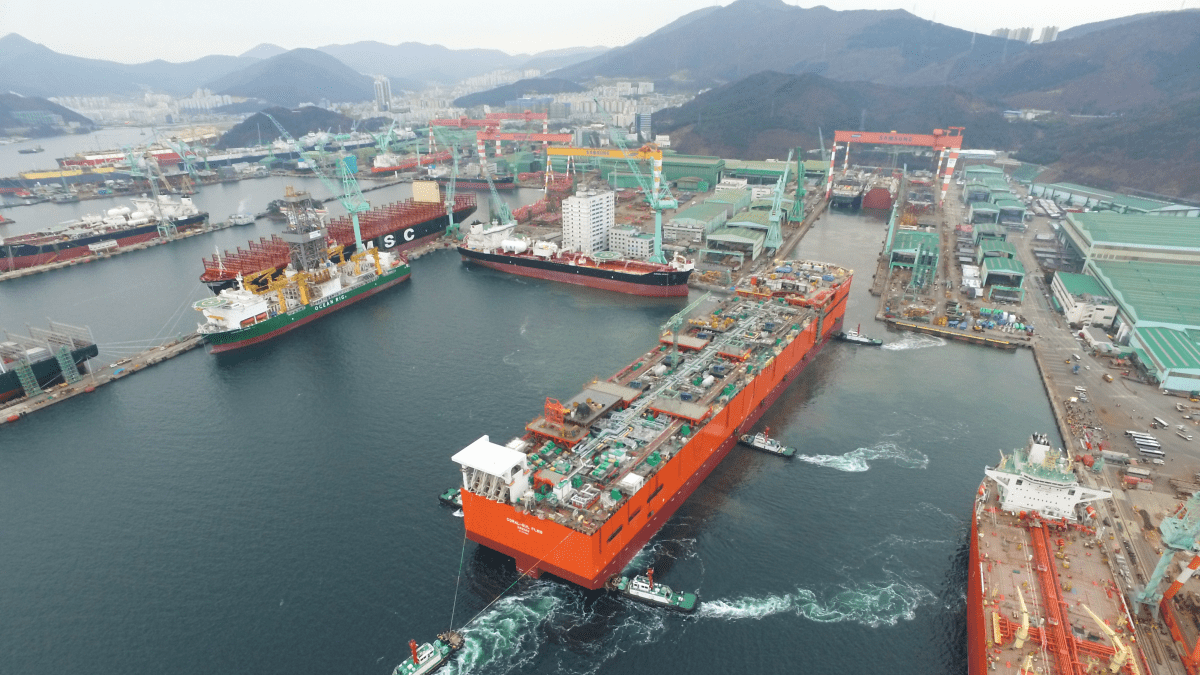Coral Sul FLNG will begin exports of LNG from Mozambique this year
Africa’s first floating LNG (FLNG) vessel in ultra-deepwater will produce its first commercial cargo in H2 2022, adding Mozambique to the list of LNG exporting countries.
The commercial milestone for Coral Sul FLNG was announced by Italy’s Eni, one of the partners in the Mozambique Rovuma Joint Venture and delegated operator of Area 4. The JV, which includes ExxonMobil and China National Petroleum Corp (CNPC), holds a 70% stake in the Area 4 E&P concession contract. Galp, Kogas and Empresa Nacional de Hidrocarbonetos each hold a 10% interest.
Moored by 20 lines in 2,000 m of water, Coral Sul FLNG is 432 m long and 66 m wide, with capacity to accommodate up to 350 in its eight-story living quarters module.
Coral Sul FLNG has a gas liquefaction capacity of 3.4 mta, fed by 450 billion cubic metres (bcm) of gas from the giant Coral reservoir, located in the offshore Rovuma Basin. 100% of the LNG production will be sold to BP under a 20-year contract.
The FLNG was constructed by the TJS consortium led by Technip Energies and composed of JGC Corp and South Korean shipbuilder Samsung Heavy Industries (SHI). Technip Energies and JGC were in charge of the FLNG’s commissioning, start-up and operation until provisional acceptance.
“New LNG supply from Africa this year is welcome news for Asia and Europe”
Air Products supplied the cryogenic coil-wound heat exchanger technology and a license for its AP-DMR liquefaction process for Coral Sul FLNG.
Integrated marine services will be supplied by Smit Lamnalco for the Coral Sul FLNG operation under a 10-year fixed-term contract. It contracted Turkish shipyard Uzmar to build three Robert Allan-design 93-tonne bollard pull terminal tugs and one OSD IMT MPV 4600 design multi-purpose offshore support vessel for the project.
New supply from Africa
New LNG supply from Africa this year is welcome news for Asia and Europe, which have played tug-of-war in the current volatile, tight market. Last year, Algeria, Angola, Cameroon, Egypt, Equatorial Guinea and Nigeria exported about 42.3 mta of LNG. Senegal and Mauritania will join those African nations next year, when its FLNG begins producing LNG from gas resources from the Great /Ahmeyim field by Q3 2023. The first phase will produce 2.5 mta, with the potential to double capacity to 5 mta.
Earlier this year, Eni reached a framework agreement with EGAS to promote the export of Egyptian gas to Europe and Italy in particular. Up to 3 bcm of LNG cargoes will be supplied to Eni’s portfolio in 2022.
Optimising design
Cost control is always a concern with FLNG projects. A recent project by K-Line and JGC looks to reduce costs for FLNG designs through the re-use of storage tanks from older LNG carriers. By re-using existing LNG vessels’ Type B storage tanks, the potential number of shipyards globally able to build FLNG units is increased, which supports the forecasted demand for a wider and quicker adoption of FLNG technology. ABS issued an AiP to K-Line and JGC for the concept.
In an effort standardise and optimise FLNG design, Wison Offshore & Marine (WOM) and ABB are collaborating to “increase productivity in greenfield developments and in doing so, improve overall capex efficiency,” according to WOM assistant president Wei Huaqing.






